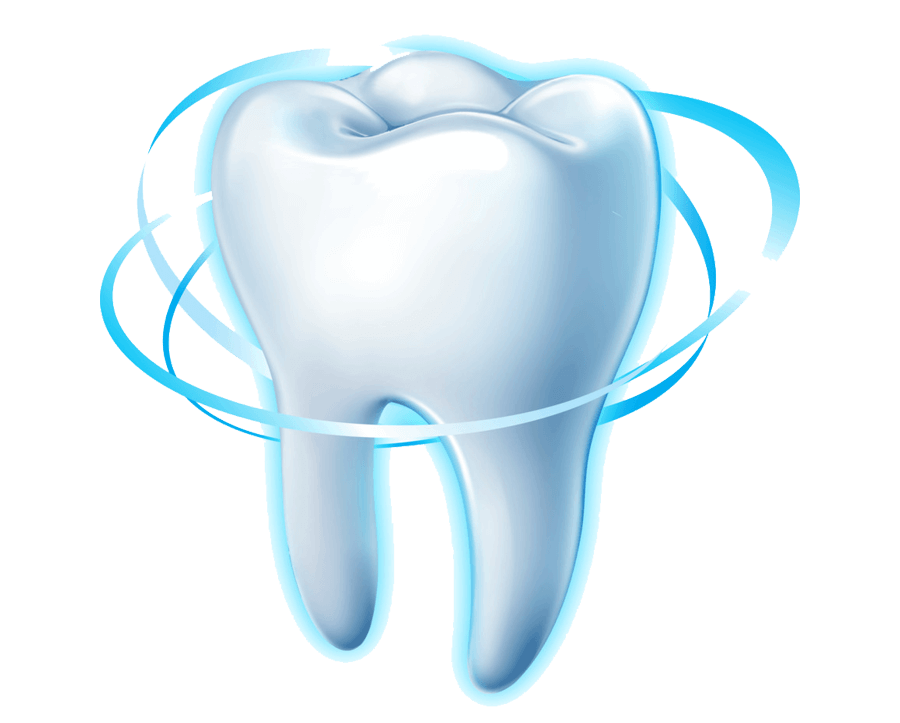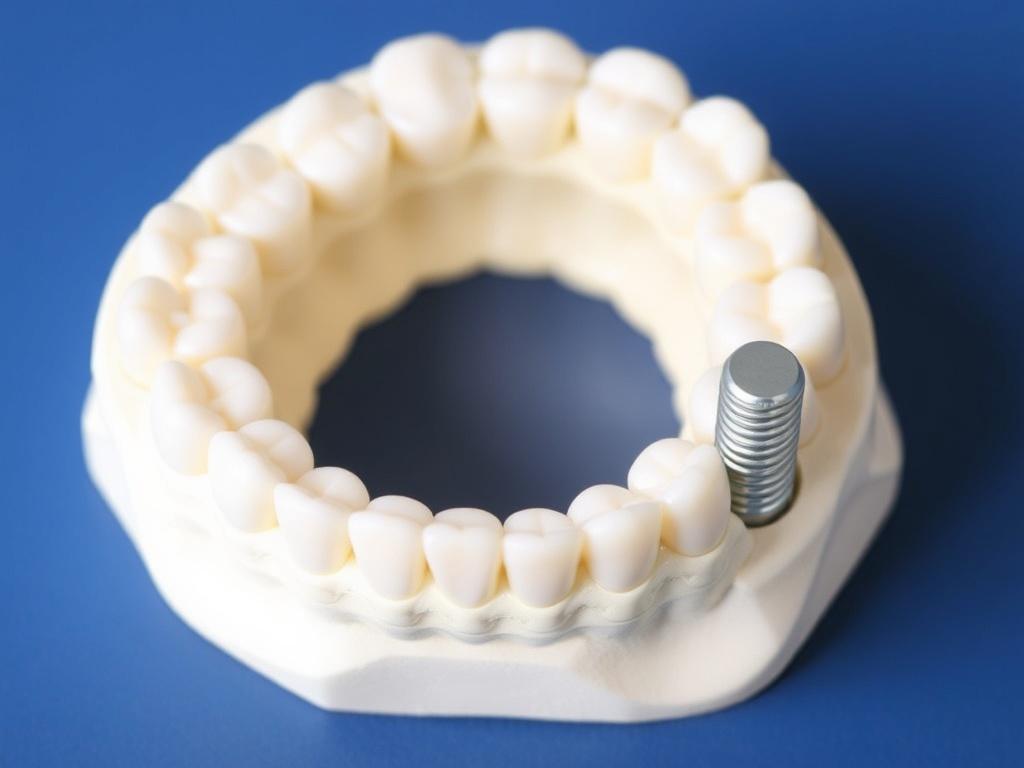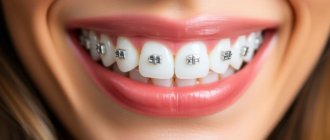Choosing the right type of Zahnersatz — a dental prosthesis — can feel like navigating a maze. You’ve probably heard words like Brücke, Teilprothese and Implantat tossed around at the dentist’s office, and they may sound like options that are either complicated or expensive. The truth is simpler: each solution has its strengths, limitations, and ideal situations. In this article I’ll walk you through the practical differences, the day-to-day realities, and the emotional considerations so you can decide which option might be best for you. I’ll keep it conversational and clear, using real-world examples, a comparative table, and step-by-step guidance on what to expect before, during, and after treatment.
Содержание
- 1 Understanding the vocabulary: What do Brücke, Teilprothese and Implantat mean?
- 2 How to decide: medical, practical and personal factors
- 3 Brücke: The fixed bridge explained
- 4 Teilprothese: The removable partial denture
- 5 Implantat: Dental implant basics
- 6 Comparing the three: a pragmatic table
- 7 Cost: what will your wallet feel?
- 8 Daily life and maintenance
- 9 Longevity and long-term considerations
- 10 Psychological and lifestyle factors
- 11 Technology and future directions
- 12 Common myths and misconceptions
- 13 Questions to ask your dentist
- 14 Real-life scenarios and recommendations
- 15 Aftercare: what you’ll actually need to do
- 16 Making the final decision: a step-by-step plan
Understanding the vocabulary: What do Brücke, Teilprothese and Implantat mean?
Before diving into pros and cons, let’s settle the language. Zahnersatz is the German word for dental replacement or prosthesis. Brücke translates to a dental bridge, Teilprothese is a partial denture, and Implantat is a dental implant. While the terms are German, the concepts are universal in dentistry.
A Brücke (bridge) is a fixed dental restoration that uses neighboring teeth as anchors to replace one or more missing teeth. It’s attached to the natural teeth or to implants and cannot be removed by the patient. A Teilprothese (partial denture) is a removable appliance that fills gaps left by missing teeth; it often uses metal clasps or precision attachments to stay in place. An Implantat (implant) is a metal post, usually titanium, surgically placed into the jawbone, acting as an artificial tooth root on which a crown, bridge, or removable prosthesis can be mounted.
These three choices represent different philosophies of tooth replacement: fixed versus removable, conservative versus surgical, and short-term fix versus long-term investment. Understanding where each one sits on that spectrum helps you make a confident decision.
How to decide: medical, practical and personal factors
Choosing Zahnersatz isn’t just about the cheapest or most modern option. There are three broad categories of factors you should weigh:
– Medical: bone quality, gum health, condition of adjacent teeth, and overall oral health.
– Practical: cost, maintenance, expected longevity, and time commitment for treatment.
– Personal: appearance preferences, comfort with surgery, fear of removal, and daily routine.
Think of it as a three-legged stool — if one leg is weak (for example, poor bone quality), you’ll need to compensate by strengthening other legs (like choosing a solution that doesn’t require surgical bone support).
Medical considerations in detail
Bone quality and quantity: Dental implants require sufficient jawbone to support the post. If bone has atrophied after a missing tooth, bone grafting might be necessary. Bridges and partial dentures are less dependent on bone volume.
Adjacent teeth condition: A bridge requires strong, healthy abutment teeth to support crowns. If neighboring teeth already have large fillings or are weak, a bridge may not be ideal because you’ll be preparing otherwise healthy teeth. Partial dentures don’t require altering adjacent teeth, though they may use clasps that can affect neighbouring tooth enamel over time.
Gum and periodontal health: Active gum disease must be treated before any long-term prosthetic work. Poor gum health can undermine implants, destabilize bridges, and fit for partial dentures.
Medical history and systemic health: Certain conditions such as uncontrolled diabetes, heavy smoking, or medications that affect bone metabolism can affect implant success. A bridge or partial denture may be safer for someone with high surgical risk.
Age and growth: In younger patients whose jaws are still growing, implants may be delayed until growth stabilizes; temporary solutions like partial dentures or adhesive bridges can be used in the meantime.
Brücke: The fixed bridge explained
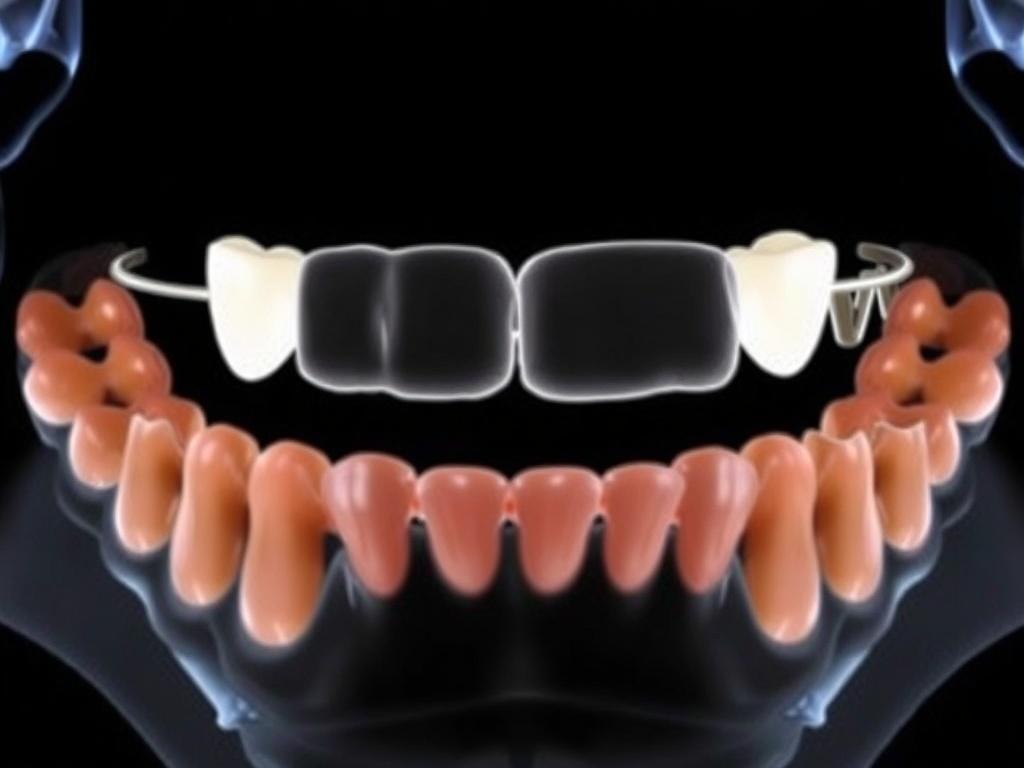
A Brücke — fixed dental bridge — is often recommended when one or more adjacent teeth are strong and healthy enough to serve as supports. A common scenario is a single missing tooth between two healthy teeth: the adjacent teeth are prepared (shaved down) and crowned, with a pontic (the fake tooth) bridging the gap.
Advantages of a Brücke:
– Fixed in place — you don’t remove it to clean it, which many people prefer.
– Faster process than implants — usually requires a few appointments.
– Predictable costs — fewer surgical variables.
– Good aesthetics — modern materials can match color and shine.
Disadvantages:
– Requires reduction of healthy tooth structure to make crowns.
– If an abutment tooth fails later, the whole bridge may need replacement.
– Does not prevent bone loss in the area of the missing tooth because it does not replace the root.
– Cleaning under the pontic requires special flossing techniques (e.g., floss threaders).
What to expect during treatment:
– Initial consultation and X-rays. A dentist evaluates the abutment teeth and bone.
– Tooth preparation: adjacent teeth are shaped for crowns.
– Impressions: a lab fabricates the bridge.
– Temporary bridge: you’ll wear a temporary while the permanent bridge is made.
– Final cementation: the permanent bridge is fitted and cemented.
Ideal candidates:
– Patients with strong adjacent teeth.
– Those desiring a non-surgical fixed option.
– People looking for a quicker, often less expensive route than implants.
Teilprothese: The removable partial denture
A Teilprothese replaces one or multiple teeth in a single arch and can be removed by the patient. It’s commonly used when several non-adjacent teeth are missing or when cost constraints make other options impractical.
Advantages:
– Cost-effective: often the least expensive immediate option.
– Non-invasive: no surgery or removal of healthy tooth structure generally required.
– Flexible: can replace several teeth across the arch.
– Easy to repair or modify if additional teeth are lost.
Disadvantages:
– Often less comfortable and less stable than fixed options.
– Visible clasps can affect aesthetics.
– May accelerate wear on remaining teeth due to movement or pressure points.
– Requires daily removal for cleaning and nightly soaking.
– Can lead to faster bone loss in the areas where teeth are missing.
What to expect during treatment:
– Impressions and bite records.
– Try-in appointments to ensure fit and comfort.
– Adjustments over weeks to months as your mouth adapts.
– Maintenance visits: relines and adjustments are often needed as bone and gum shape changes.
Ideal candidates:
– People who need a fast, affordable solution.
– Patients who cannot undergo surgery due to medical reasons.
– Those who may require a temporary solution until a more permanent option is feasible.
Implantat: Dental implant basics
An Implantat replaces the tooth root with a titanium post (or occasionally zirconia) that fuses with the jawbone — a process called osseointegration. Once stable, it can support a crown, bridge, or even stabilize a denture.
Advantages:
– Preserves jawbone by transmitting chewing forces to bone.
– Feels and functions very much like a natural tooth.
– Doesn’t require altering adjacent teeth.
– Long-lasting: with good care, implants can last decades.
– Allows for excellent aesthetics and stability.
Disadvantages:
– Requires surgery and healing time — often several months total.
– Higher upfront cost compared with bridges or partials.
– Not suitable for everyone — depends on bone and health status.
– Potential complications: infection, implant failure (rare), nerve injury if not planned carefully.
What to expect during treatment:
– Comprehensive planning including CBCT scans to evaluate bone.
– Surgical placement of the implant.
– Healing period (typically 3–6 months) for osseointegration.
– Placement of an abutment and crown once healed.
– Regular maintenance and good oral hygiene are critical.
Ideal candidates:
– Healthy patients with sufficient bone or willing to undergo grafting.
– People seeking a permanent, natural-feeling option.
– Those ready to invest in long-term dental health.
Immediate versus delayed implants
Some implants are placed immediately after tooth extraction; others are delayed. Immediate placement can shorten treatment time and preserve gum contours, but it requires ideal conditions and is not always possible. Delayed implants after healing can give more predictable results when infection or bone loss is present.
Comparing the three: a pragmatic table
| Feature | Brücke (Bridge) | Teilprothese (Partial Denture) | Implantat (Implant) |
|---|---|---|---|
| Fixation | Fixed, not removable | Removable | Fixed (when crown/bridge attached) or can support removable |
| Impact on adjacent teeth | Requires preparation of adjacent teeth | Minimal, but clasps may affect teeth | No alteration of adjacent teeth needed |
| Bone preservation | No, bone loss continues | No, bone loss continues | Yes, helps preserve bone |
| Lifespan | 10–15 years average (with care) | 5–10 years average (depends on maintenance) | 15–30+ years possible with good care |
| Cost | Moderate | Low to moderate | High (initially), cost-effective long-term |
| Treatment time | Weeks | Weeks | Months (sometimes longer) |
| Comfort | High for many patients | Variable; can feel bulky | High; close to natural tooth |
Cost: what will your wallet feel?
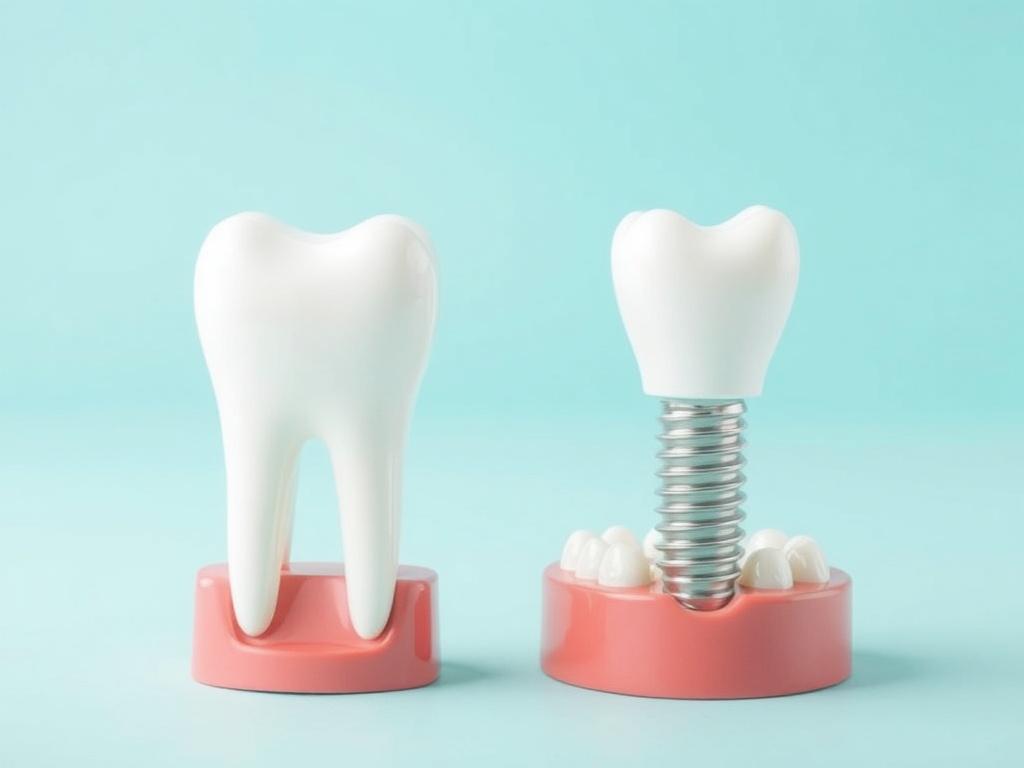
Money often plays a decisive role. Costs vary widely by country, materials, complexity, and whether additional procedures (e.g., grafts, sinus lifts) are necessary. Generally:
– Teilprothesen are the least expensive upfront — a good choice for budget constraints or temporary needs.
– Brücken are mid-range, cost-wise. They often cost less than an implant if you exclude long-term replacement cycles.
– Implantate have the highest initial cost but often the best long-term value due to longevity and fewer replacements.
Remember to factor in indirect costs: potential future treatments if supporting teeth fail (for bridges), relines for dentures, or grafting for implants. Also check insurance coverage — in some systems, basic partial dentures or bridges might be subsidized, while implants are considered elective and less covered.
Daily life and maintenance
How each option affects your everyday routine is a critical consideration. Think about eating, cleaning, comfort, and sleep.
Oral hygiene and cleaning:
– Bridge: You’ll need interdental brushes or floss threaders to clean under the pontic and around abutments. Daily care is essential to prevent decay under crowns.
– Partial denture: Remove and clean daily. Brush remaining teeth and gums. Use denture cleansers overnight. Be aware of plaque accumulation on clasps.
– Implant: Clean like a regular tooth — toothbrush, interdental cleaning, and professional check-ups. Peri-implantitis (inflammation around implants) is a risk if hygiene is poor.
Eating and speech:
– Bridges and implants restore chewing power well and allow a broad diet without much restriction.
– Partial dentures may have initial speech impedance and can limit hard or sticky foods; adjustments can help.
Comfort:
– Bridges and implants are generally more comfortable because they’re fixed and feel more natural.
– Partial dentures can feel bulky, and clasps can irritate or shift.
Longevity and long-term considerations

How long will your Zahnersatz last? It depends on maintenance, materials, and biological factors.
– Bridges: With excellent oral hygiene and periodic replacement of the crowns, bridges can last 10–15 years or longer. However, decay, gum disease, or fracture can compromise them.
– Partial dentures: Typically require more frequent adjustments and investment; expect to replace or reline every 5–10 years.
– Implants: If properly placed and maintained, implants have a high success rate and can last decades. However, the prosthetic crown on top may need replacement sooner.
Consider the “domino effect”: an ill-fitting partial denture or a failing bridge can accelerate damage to remaining teeth and gums, leading to more extensive work down the road. Implants can help break that chain by preserving bone and not relying on adjacent teeth — but they are not without maintenance needs.
When to consider replacing or upgrading
– Pain, loosening, or recurrent infections around a prosthesis are clear signs to see your dentist.
– Changes in bone or gum shape that cause poor fit.
– Aesthetic concerns or changes in your bite that affect comfort.
– Wear and fracture of prosthetic materials.
Timely repairs and replacements can often prevent more complex treatments later.
Psychological and lifestyle factors
Tooth loss affects more than chewing. It touches self-esteem, social interactions, and even nutrition. Some people prioritize the emotional benefit of a permanent-feeling solution and are willing to pay more for implants. Others prefer a removable denture because they like the easier cleaning routine or because they anticipate future changes in oral health.
If you’re an athlete, smoker, or someone who travels widely, think about how each option fits your lifestyle. Implant surgery requires appointments and healing time — if you can’t afford downtime, a bridge or denture might be preferable. On the other hand, if you live in a place with poor access to dental care, a durable implant could reduce future interventions.
Technology and future directions
Digital dentistry has improved planning and outcomes for all three options. 3D imaging and guided implant surgery increase precision and reduce complications. CAD/CAM milling lets dentists design and deliver crowns and bridges faster and with better aesthetics. For partial dentures, new flexible materials and digital workflows create better fitting, lighter prostheses.
Regenerative techniques and improved materials continue to blur the lines between options. In some cases, mini-implants or implant-retained dentures provide hybrid solutions tailored to specific needs.
Common myths and misconceptions
– Myth: Implants are painful. Reality: Surgery involves discomfort, but modern anesthesia and pain management make it manageable; many patients report less pain than they expected.
– Myth: Bridges are old-fashioned and bad. Reality: Bridges are reliable, quick, and suitable in many cases — especially when implants aren’t an option.
– Myth: Partial dentures look terrible. Reality: Advances in design and materials have made partials much more aesthetic and comfortable than in the past.
– Myth: Implants never fail. Reality: While highly successful, implants can fail due to infection, poor bone, or systemic factors.
Questions to ask your dentist
When discussing Zahnersatz, be ready with focused questions:
- What are my options in this specific clinical situation?
- What are the short- and long-term costs for each option?
- How will this choice affect my other teeth and jawbone over time?
- What are the risks and expected lifespan of each option?
- Do you have before-and-after photos or patient references?
- What maintenance will be required, and how often should I see you?
- If I choose an implant, will I need bone grafting and what does that involve?
Asking these will help you move from abstract pros and cons to a concrete plan tailored to your mouth and life.
Real-life scenarios and recommendations
Consider a few typical patient stories to see how decisions are made:
– Scenario 1: A 45-year-old non-smoker missing a single tooth between two healthy teeth. This patient values permanence and aesthetics and has healthy bone. An implant is often the best choice to preserve bone and avoid altering neighboring teeth. A bridge is also reasonable if they prefer not to undergo surgery.
– Scenario 2: A 70-year-old with several missing teeth, limited budget, and some gum recession. A partial denture can restore function affordably and be a good solution if implants are not medically or economically feasible.
– Scenario 3: A 30-year-old with a shallow jawbone after trauma. Bone grafting is possible but lengthens treatment and cost. The patient must weigh the benefits of implants against a bridge that avoids grafting but sacrifices healthy neighboring tooth structure.
– Scenario 4: A patient with uncontrolled diabetes or heavy smoking history. Medical risks increase implant complications; a bridge or partial denture may be safer until systemic conditions are improved.
These examples show there’s no single “right” choice — just the right choice for your circumstances.
Aftercare: what you’ll actually need to do
Aftercare differs by option, but there are shared practices that improve outcomes:
- Brush twice daily and clean interdental areas — under bridges, around implants, and adjacent to partial denture rests.
- Use floss threaders, interdental brushes, or water flossers as recommended.
- Attend regular dental check-ups and professional cleanings — frequency may increase with implants for peri-implant assessments.
- Avoid smoking and control systemic conditions (e.g., diabetes) to improve longevity.
- Report discomfort or loosening immediately — early repairs prevent larger failures.
Making the final decision: a step-by-step plan
1. Get a full evaluation: X-rays and possibly a CBCT scan will give the information needed about bone and structure.
2. Discuss all options and get cost estimates: include potential follow-up costs and replacements.
3. Consider timing and lifestyle: how soon do you need a solution and how much downtime can you accept?
4. Check medical suitability: ensure your general health supports the chosen procedure.
5. Think long-term: what will best preserve your oral health and quality of life over decades?
6. Make the choice and plan for maintenance: whatever option you choose, commit to the care plan to maximize lifespan.
Work with your dental team
A trusting relationship with your dentist and dental technician makes a big difference. Ask about experience with implants, materials used for bridges and dentures, and how many similar cases they’ve handled. Sometimes a second opinion or consultation with a specialist (prosthodontist or oral surgeon) is wise.
Conclusion
Choosing between a Brücke, Teilprothese, or Implantat is a personal and clinical decision that balances health, budget, lifestyle, and aesthetics. Bridges offer a fixed, relatively quick solution but require altering adjacent teeth and do not stop bone loss. Partial dentures are cost-effective and non-invasive but can be less comfortable and require more maintenance. Implants provide the closest experience to natural teeth, preserve bone, and typically last longest, but they require surgery and greater upfront cost. The right choice depends on your oral condition, medical background, and priorities—so get a thorough exam, ask practical questions, and plan for long-term care to protect your smile.
